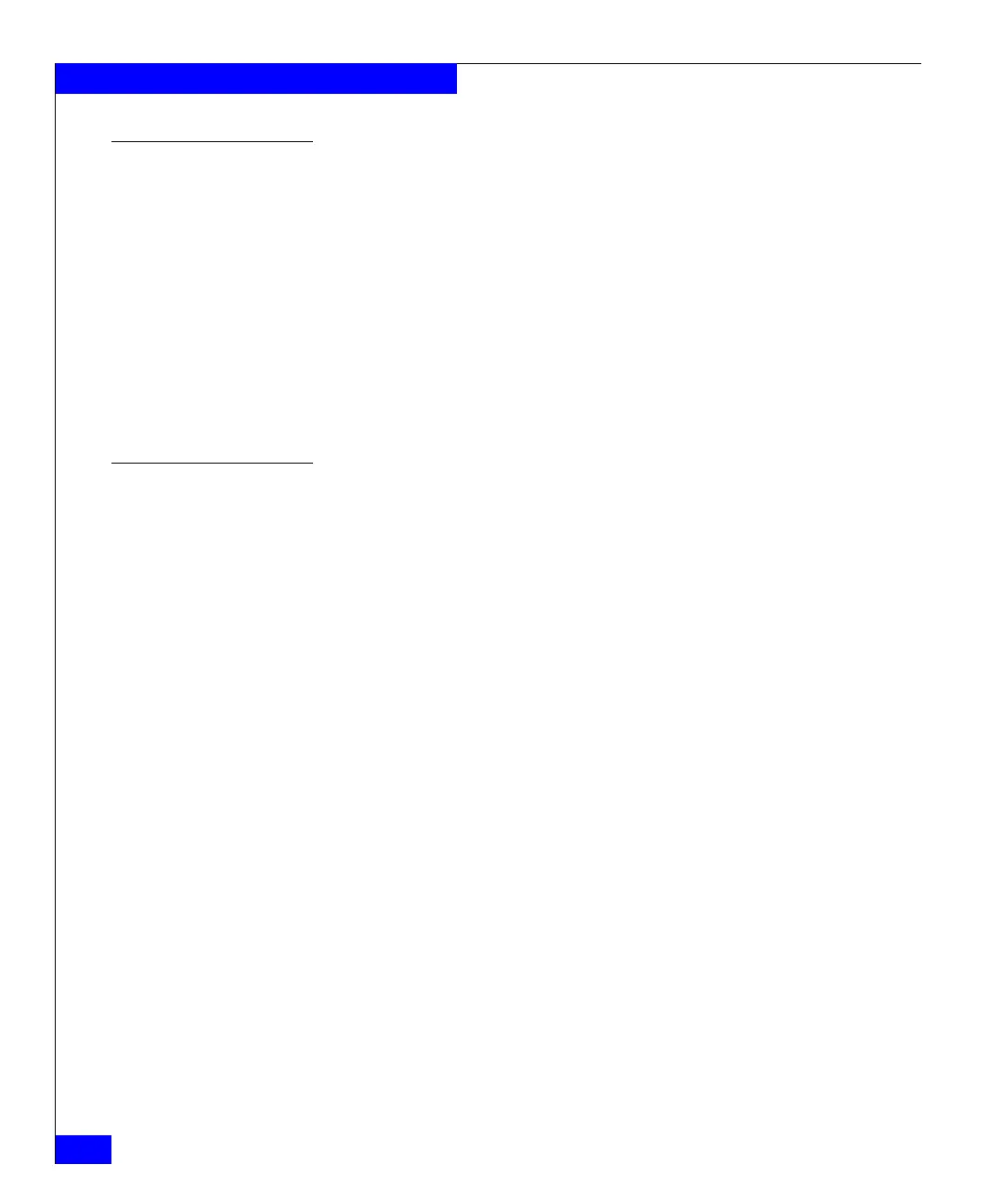222
EMC Symmetrix DMX-3 Product Guide
Data Integrity, Availability, and Protection
SRDF family options
There are a number of additional options and features that can be
added to the base solutions to solve specific service level
requirements. These options include:
◆ SRDF/Automated Replication (SRDF/AR) solutions for meeting
very specific, remote replication service-level requirements.
◆ SRDF/Star for advanced multisite failover with continuous
protection.
◆ SRDF/Consistency Groups (SRDF/CG) for data consistency.
◆ SRDF/Cluster Enabler (SRDF/CE) for integration with
host-based clustering products such as Microsoft Cluster Server
(MSCS).
SRDF/A resiliency
features
There are a number of additional SRDF/A features that can be added
to the base solution to solve specific service level requirements. These
features include:
◆ SRDF/A Reserve Capacity enhances SRDF/A's ability to
maintain operational state when encountering network resource
shortfalls that would have previously suspended SRDF/A
operations. With SRDF/A Reserve Capacity functions enabled,
additional resource allocation can be applied to address
temporary workload peaks, periods of network congestion, or
even temporary network outages.
The two functions that implement SRDF/A Reserve Capacity are
Transmit Idle and Delta Set Extension (DSE), and they work
together to maximize availability of continuous remote
replication operations while minimizing operational overhead.
• SRDF/A Transmit Idle enables asynchronous replication
operations to remain active in the event all links are lost
temporarily due to network outages. The time SRDF/A
remains active will depend on the system not reaching the
system write pending limit or SRDF/A max cache limit, which
is user setable.
• SRDF/A Delta Set Extension or DSE enables asynchronous
replication operations to remain active in the event system
cache resources are becoming in danger of reaching the system
write pending or SRDF/A max cache limit.
